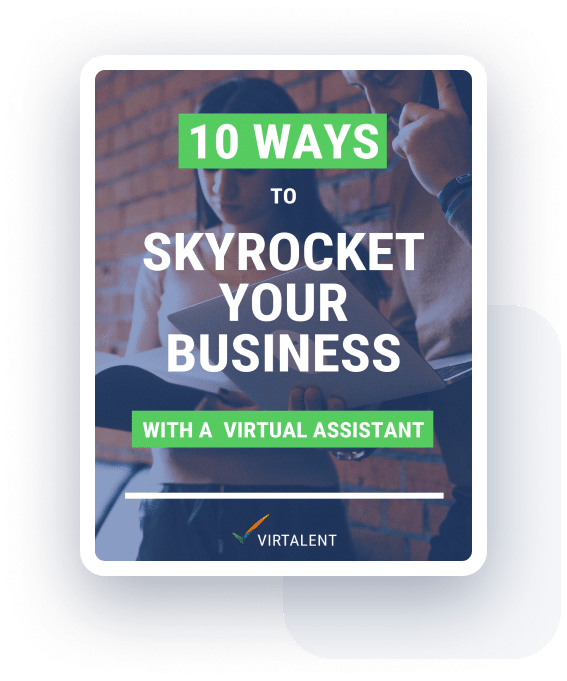Hello and welcome back to our “sales for busy entrepreneurs” blog series, following the post we wrote last month covering the essentials you need to know before professionalising your sales strategy. Now we’d like to discuss lead generation. In this post we’ll cover the use of directories and listings, as well as the importance of networking (with a good elevator pitch up your sleeve!).
So, let’s begin!
Using directories and crawling the web
Directories exist in many shapes and sizes, from a copy of the Yellow Pages to local business listings on your local Chamber of Commerce website. This is an easy way to find prospects to qualify, provided you are in the B2B market, but as with any activity that doesn’t require a great deal of effort, the results may not be as great as you hope. This is a “quantity over quality” approach. That said, business directories are as good a place as any to start making a sales database of prospective sales leads. Try to target specific industries. Think about who your “ideal customer” is – what do they do every day and where will you find them?
A more time-consuming (but perhaps more worthwhile) approach to generating a long list of prospects to contact would be to put some effort into finding smaller, more focused websites in particular niches. These people won’t be used to fending off so many sales messages (as they are harder to find!) and are more likely to be interested in what you have to offer. If you’re selling lawnmowers, see if there is a regular meeting for keen gardeners in your area, or an industry event for garden centre owners. Likewise, if you’re selling luxury ice cream, where can you find a list of ice cream parlours in your local region? Where can you find a group of ice cream enthusiasts? Think hard about who you are trying to reach out to and see if you can find a way to get hold of them through a membership organisation or hobby group. Social media (and networking) is great for this type of thing.
Networking and the importance of an elevator pitch
For b2b sales, especially those requiring quite a big commitment for both sides of the sale (perhaps a long service contract), networking is key. Yes, it can be time-consuming and, if you’re not particularly charismatic, it can be difficult to get stuck into at times. We can guarantee that if you go to the “right” events and go with a clear reason in your mind for why you are there, (to find a new client, for example), networking really offers the best return on your time commitment than almost all other sales processes. Business is constantly changing. You’ll make some great friends through networking that you will keep in contact with for years to come.
“Networking” can take place in quite a formal way, at an industry event, for example, or can happen quite spontaneously while you’re out and about meeting new people in the daily course of life. To get going, a good place to start looking for networking events is your local Chamber of Commerce, a university or school Alumni association you may be a member of. The website Meetup.com lists thousands of niche “meetups” so that’s another way to find networking events. There are a good number of business networking groups in ever major city, some more formal than others and, equally, some more worthwhile to attend than others! If you’re not feeling all too confident, try going with a friend or colleague, but make sure that you do still push yourself out of your comfort zone to talk to other delegates at the event.
Sometimes going to events that have keynote speakers is a good way to network without the fear of being thrown in the deep end, talking to strangers all evening. With speaker events, there is often an opportunity to network before and after the main presentation (as opposed to the whole evening), and the fact that you and your fellow delegates have come to see the speaker in question will give you a good starting point for a conversation. Perhaps you both work in the speaker’s industry or you have read a book that the speaker has published. Find out why the other delegates are there and let the conversation flow naturally.
To make the most of the opportunity, there are a few things you can prepare in advance of any networking event. First, have some professional-looking business cards to hand out or, at the very least, have a pen and notepad so you can jot down your details if anyone is interested in staying in touch. It sounds simple, but you don’t want to have met people and forget their details 10 minutes later – that’s definitely not a good first impression. Next, make sure you dress appropriately. Notice that we don’t say “smartly”, but instead “appropriately”. Most of the time if you go dressed in a suit to an event in the gaming industry, for example, you will stand out – and we’re not sure that you’ll stand out in a good way. Equally, if you buy a ticket to an expensive industry conference where a number of senior officials will be attending, don’t turn up in a t-shirt and jeans. You’re not Mark Zuckerberg and shouldn’t try to act like you are! However you dress, make sure you’ve had a good freshen up. No one likes smelly breath or sweaty palms.
The most important thing you can do to prepare for any networking event is to prepare what we call an “elevator pitch”. This is something that caught on around the time of the dot.com bubble of the late 90s, when investment was being given out to pretty much anyone with an idea for a new website or new technology product, regardless of whether it would gain any real transaction in the market. Elevator pitches came about as a way for startup founders to be prepared if they happened to walk to an elevator and bumped into an investor or another well-connected, powerful individual. You wouldn’t usually get an opportunity to speak to that person, especially alone, for any length of time, so imagine you have from the time it takes for the elevator (or “lift” to us here in the UK!) to ascend from the ground floor all the way to the top, executive floor, where presumably this individual will be getting out. Some people say that an elevator pitch should be around 15 seconds, some 30 and some 60 seconds.
Whatever the length, the main purpose of forming an elevator pitch and then practicing it, is to ensure you can quickly and effectively summarise what your business does (or would do if it’s just an idea). It’s a great exercise to try, give it a go. It will force you to come up with a short, snappy explanation and ensure you only talk about the true benefits of the product or service you have to offer, without rambling. Hopefully, once you have practiced your elevator pitch a few times, it will easily roll off your tongue. If you’re stuck for ideas just turn to our good friends Youtube and Google for some inspiring examples.
Building word-of-mouth referrals
Obviously, the easiest way to retain customers is to make sure your existing customers tell their network about your product or service. This is why your reputation is your most valuable asset. If you’re selling to the end consumer, you need to encourage them to refer their friends and family, whereas if you’re selling to other businesses, you need to encourage your clients to recommend you to others in your industry.
The simple way to ensure you receive a lot of referrals is simply to offer an outstanding product, backed by even better customer service. There is absolutely no reason why your happy customers won’t tell other people about your product or service, if you give them a good reason to, and there’s no reason why this won’t see a retention in customers. Think about the last time you had a really bad customer experience. How many people did you tell at the time? Would you recommend that company to a friend if they asked your opinion on the best provider out there? The same applies to great customer service and a well-designed product.
You can encourage referrals even further by offering your existing customers a worthwhile incentive for them to go out of their way to tell other people about their experience with your company. Give them a discount voucher that they can use themselves or pass on to their friends, offer them access to premium product features or enter them into a prize draw to win an iPad, the possibilities are endless! You are more likely to retain customers if you provide a further incentive for customers to buy off you again. Think about what your customer would be motivated by in order for them to mention your company the next time they meet up with their friends. For some industries (or if you run a small local business) this could be something small, a monthly prize draw to win a bottle of champagne for anyone that refers a friend to you for example, but in other circumstances a prize draw to win some tickets to the final of a Premier League football game would be more fitting. Dropbox pull this off very well – they offer extra storage space if someone else signs up with a link that you sent them. Have a think what you can do and give it a try. Mention the referral scheme in your newsletters and promotional materials, and be sure to mention it clearly on your website, as well as to customers that come into your shop or office if you have one. Creating excitement is how you retain customers!
Repeat custom
In your focus to get as many new customers signed up as possible and increase your sales, it’s easy to forget that you may have already accumulated several months, or even years, worth of existing customers. Did you know that selling to customers who have bought from you in the past, is at least 5 times cheaper than securing a new customer?
Work out a way to make a database of all the customers that have bought from you in the past few years (your first list) with those that have bought from you in the past few months (your second list). Call those from the first list that don’t appear on the second list, and find out why they haven’t bought from you recently. These are good warm leads as they have bought from you in the past and, unless you have done something to upset them, there is no reason why they wouldn’t buy from you again – they may have just forgotten about you (it happens!).
Another way to ensure you retain customers is to make sure you follow up on your existing customer database regularly to maximise the sales opportunities available to you. The same could be done every afternoon (for a business dispatching physical goods) by going through your sales history for the day so far, then calling each customer to see if they would like anything else added to their order before it is dispatched. This can prove beneficial as you could be told by the customer that they couldn’t find the other things they were looking for on our website, or that they didn’t know you sold a particular product. Why not add it on to the order and once they pay for the extra item, upgrade them to priority shipping as a thank you? You’ll really stand out from the competition by going the extra mile!
On that note, be sure to treat your existing customers just as well as your new customers. There is nothing worse than seeing new customers being offered all sorts of great deals to get them on board, when as an existing loyal customer, you are not being offered anything. Businesses also often forget that their existing customers, or customers that have bought from you in the past but stopped a while ago for some reason, offer the best sales opportunity imaginable. They can provide you with feedback about why they do or do not buy from you at the moment. Perhaps they think your customer service team are great, but your delivery times are just too slow? Use existing customers and your sales databases as a way to rapidly iron out problems with your business. After all, the customer does often know best and bearing this in mind is how to retain customers!
Advertising and promotional activities
Sometimes, the only way for people to notice that you exist (especially if you’re offering an innovative or specialist product and so they’re not actively searching for the product you offer), is to really SHOUT about what you have to offer! This means paying for advertising and for promotional materials, as well as distributing press releases, sponsoring events and so on. Generally, anything that PROMOTES your business falls under this category.
Now, advertising can be expensive and is a difficult aspect of marketing to master. You need to make sure that the advertising space will be seen by your target audience and that they have a reason to then take action after seeing your advert. There are two parts to what we’ve have just said. First, making sure your ad will be seen by your target audience. This sounds simple, but if you don’t think about this carefully you will waste a LOT of money on advertising! Break it down. Imagine your ideal customer – what would they wear, what sort of morals and ideals would they have, what programmes would they watch on TV, what sort of magazines would they read (if any), what websites would they visit, how often do they use social media, what do they do for a living, etc. It sounds crazy, but you need to have a clear picture of who your adverts are trying to talk to and where they should be placed. A good example is when people use Facebook ads. Sure, you can make them really targeted, but if your ideal customer is just too busy to use social media (perhaps their an angel investor or businessman), they really won’t see your advert anytime soon, and in the rare moments that they do happen to check their profiles for any updates or notifications, they will be in and out the website extremely quickly. All in all, it isn’t very likely that they’ll pay attention to any your adverts. You need to think carefully about where you are spending your advertising budget and, then, also making sure the advert itself is targeted well at your target audience.
Now, here at Virtalent, we understand that many start-ups won’t have a lot of money to spend on advertising, so we’d recommend they look into a topic called “guerrilla marketing”. There is too much to cover on the subject for the time being, but there are a few ways you can promote your business aside from the inbound marketing stuff. Now, for the younger entrepreneurs out there, you may find what we’re going to tell you a little too “traditional”, but the thing is offline guerrilla marketing techniques can work extremely well, especially if you are looking to get your first few sales.
Firstly, if you have some free time, having some leaflets printed and then giving them out to the right people is an extremely cost effective way to market your business. Whilst this works better if you’re selling to the general public (consumer goods for example) and can let them try, test or taste the product at the same time as giving them a leaflet. The same applies to selling to businesses – you just need to be smart about where and when you give these out. Try rush hour at the nearest train station to the centre of your city’s business district or (if you can’t afford to exhibit at the show itself) outside a well-attended industry event. Guerrilla marketing is much more than giving out leaflets, though – be creative and think about how you can use your limited resources to maximum effect! Think about the effect (both offline and online) that PR stunts such as organising a flashmob in the city centre could have. The idea is to go out on to the streets and into the business hubs of your city and really grab the attention of your ideal customer.
Inbound marketing: website and social media
“Inbound” marketing refers to marketing techniques you can use on incoming, inbound sales prospects, i.e. instead of going out on to the streets giving out leaflets, these people are coming to you. You need to then convince them that you offer the ideal product/service to satisfy their needs. This should be a little easier as effectively these are warm leads, they have shown an interest in your product/service, as opposed to the cold leads you are targeting most of the time when carrying out other advertising/promotion activities.
Again, there is a lot to cover about inbound marketing so for the moment we’ll just go over the basics. Social media should be used to connect with your “ideal customer” before attempting to engage them in dialogue. Think about the AIDA model we discussed earlier. Engaging with a potential customer on social media could cover all four steps of the model, at no cost to you (apart from your time), and so is a great marketing tool.
Let’s use Twitter as an example. To grab the attention of your prospects, follow them and see if they follow back or ask for re-tweets from your existing followers to get your tweets appearing on the Twitter feeds. Try to get your tweets in front of the eyeballs of your ideal customer. Once they have followed you on Twitter, you need to increase their interest in your company. Tweet and re-tweet relevant content that your ideal customer would enjoy reading, as well as making sure you balance this with a good few tweets every now and then that actually tell your audience what you offer, as well as any special offers that you are offering at the moment. Don’t leave your ideal customer trying to guess what you actually do as a company, but at the same time don’t treat your Twitter feed like a one-way conversation where all you do is shout about your company. Why would anyone find that interesting? The next step is to engage your prospects. Reach out to them. Ask your audience relevant, interesting, stimulating questions. Politely direct message them. Tweet them directly with compliments, questions and helpful suggestions. Just make sure you use your common sense – we can all hold a conversation in real life but when it comes to social media some people seem to transform into robots! Remember, the key to a successful social media strategy is honesty and authenticity, not using it as a tool to harass potential customers and shove your marketing messages down their throat!
The final stage of the model, in terms of Twitter itself, is to ask your most engaged audience members to take action of some kind (a “call to action”, remember!). Perhaps message them a special discount, or a free trial, or even a link to a free ebook? Be creative and, again, think about how relevant your message really is to your ideal customer.
The same concepts can be applied to all social media channels and your website visitors, as well as people physically walking through your shop door!







